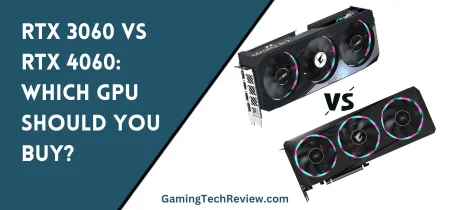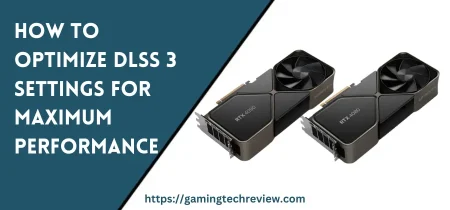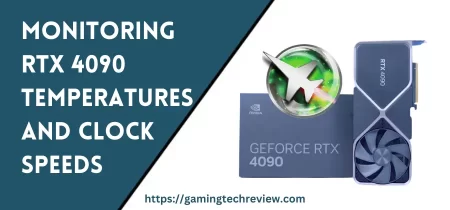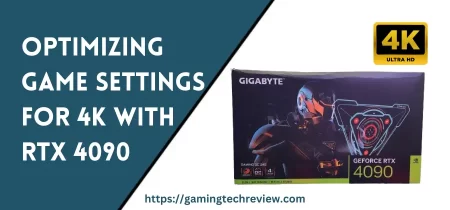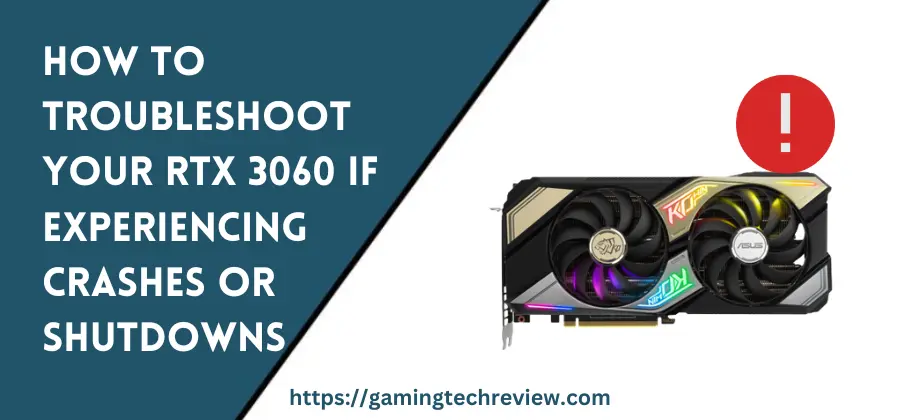
The Nvidia GeForce RTX 3060 is a powerful mid-range graphics card capable of running intense games smoothly at high settings. However, some users have reported issues with crashing or random shutdowns when using their RTX 3060. Fortunately, there are several troubleshooting steps you can take to resolve these problems. In this comprehensive guide, we’ll walk you through solutions to get your RTX 3060 running stably again.
Update Graphics Drivers
One of the first things to try when dealing with crashes or shutdowns is updating to the latest Nvidia graphics drivers. Nvidia regularly puts out driver updates that include bug fixes, optimizations, and support for new games.
To update drivers, open the GeForce Experience app, go to the Drivers tab, and click “Search for Updates.” Follow the prompts to download and clean install the latest Game Ready Driver. Avoid Express installation, instead opting for Custom or Advanced options for a fresh driver install. After updating, restart your computer and see if the crashing or shutdown issues are resolved.
Updating drivers is an easy first step that could potentially fix instability caused by bugs in older drivers. Always keep your Nvidia drivers up-to-date and check release notes for fixes pertaining to any crashes you are experiencing.
Check GPU Temperature
Excessive heat can cause graphics cards to malfunction, crash, or shut down unexpectedly. Use a system monitoring software like MSI Afterburner to check your RTX 3060’s temperature when gaming or running graphics-intensive tasks.
The RTX 3060 should run safely at around 60-85°C when under load. If the card is regularly exceeding 85°C, then overheating may be causing the crashes. The GPU core itself should not breach 80°C in most scenarios.
To lower temperatures, make sure your case has adequate airflow and cooling fans. Adjust your fan curves to ramp up RPMs when the GPU gets hot. Set a more aggressive fan curve that prioritizes lower temperatures over noise levels. Improve airflow by clearing dust buildup on heatsinks and fans with compressed air. Consider upgrading your cooling system with more powerful fans or a water cooling loop if overheating continues to be a problem.
Keeping your RTX 3060 at safe operating temperatures below 80°C will help eliminate instability from excessive heat. Monitor temperatures closely during crashes to pinpoint any correlation.
Test Power Supply
An underpowered or failing PSU can manifest as random shutdowns when gaming. The RTX 3060 recommends using at least a 550W power supply. Test that your PSU can deliver sufficient, stable power to handle spikes during gaming.
Monitor your whole system’s power draw using software like HWiNFO64. If you are exceeding 80-90% of your PSU’s capacity during crashes, you likely need a higher wattage PSU. Aim for a 650-750W 80 Plus Gold unit from reputable brands to provide plenty of headroom.
Also check that all power connections are firmly seated. Loose cables can intermittently disrupt power delivery. If your PSU is modular, try swapping cables to rule out any defects.
Use a multimeter to test voltage regulation on the 12v, 5v, and 3.3v rails under load. Voltage ripple over 5% indicates a failing PSU. If your PSU fails these tests, it will likely need to be replaced.
Check for Overclocking Issues
Overclocking a GPU can deliver higher performance, but too much of an overclock can result in crashes. If you have overclocked your RTX 3060, reset it back to stock speeds to see if your stability issues stop.
When overclocking, increase conservative increments of 25-50MHz at a time for the core clock and 100-200MHz for the memory. Test for stability in games and 3DMark benchmarks, watching for artifacts, glitches, freezes, or shutdowns.
Avoid maxing out the power and temperature slider limits when overclocking. This can overload the voltage regulators and cause crashes under heavy loads. Set the power and temp limit sliders to 112% and 90°C respectively as a safer starting point.
Improperly configured overclocks are a common source of problems. Run your RTX 3060 at stock settings to isolate whether an unstable OC is the culprit. Use MSI Afterburner’s built-in OC scanner for automatic safe overclocking.
Check for Faulty Hardware
In some cases, the RTX 3060 itself may be defective and need RMA. Testing in a different PC can help determine if your card is faulty.
Artifacting, glitches, freezes, and crashes that persist after troubleshooting often indicate a hardware problem with the GPU or memory. Nvidia RTX 3000 series cards were also prone to transient power spikes that could trip protections and shut down systems.
Thoroughly inspect the graphics card PCB and fans for any obvious damage. Check the capacitors for bulging tops which can indicate impending failure. Also inspect the power connections and PCIe slot pins for any issues. Request an RMA directly through the manufacturer if problems continue.
Ruling out a hardware fault is an important step before replacing other components like the PSU. Test in another system if possible before starting an RMA.
See Also: How to Compare PSU Brands and Models for Reliability
Update BIOS
An outdated motherboard BIOS can cause compatibility issues with newer GPUs like the RTX 3060. Check your motherboard manual for instructions to update the BIOS.
Visit your manufacturer’s website and download the latest BIOS file for your specific motherboard model. Flash the BIOS update from a USB drive, taking care not to shutdown or lose power during the process.
Updating to a newer BIOS improves compatibility, stability, and can resolve bugs. However, research any known issues first, as BIOS updates can sometimes introduce their own problems. Check forums for feedback on the latest update for your motherboard before installing.
Perform Clean Driver Installation
If crashing or shutdowns still occur after updating drivers normally, try performing a clean driver installation using DDU (Display Driver Uninstaller).
First, download the latest Nvidia drivers from the website, not GeForce Experience. Then download DDU and run it in Windows Safe Mode to fully uninstall existing Nvidia drivers. After restarting, install the freshly downloaded drivers in normal mode. This wipes out any residual files or settings that could be conflicting with the new drivers.
DDU allows for a complete clean install of the drivers, eliminating potential driver corruption or conflicts as an issue. Make sure to re-enable G-Sync, RGB or other settings after reinstalling. Only use DDU when absolutely necessary, as it can sometimes do more harm than good.
Test in Another PC
To confirm whether the crashes are isolated to your PC, try installing the RTX 3060 into another system and see if problems persist. This helps determine if there are any specific hardware incompatibilities with your components.
For example, older motherboards may not fully support Gen 4 PCIe speeds or have outdated BIOS. Case cooling limitations, CPU bottleneck, or RAM issues could also contribute to instability.
Ideally, test the GPU in a system with a compatible modern motherboard, CPU, RAM, and PSU. If it crashes there, the RTX 3060 is likely defective. But if stable, focus troubleshooting on your original build.
Reseat Components and Reapply Thermal Paste
Open up your case and firmly reseat the RTX 3060 in its PCIe slot. While inside, also check that all power cables are properly connected to the graphics card and components like the PSU, SSD, CPU, etc.
Loose connections from cables and expansion cards are common causes of boot issues or intermittent crashes. Reseating components will ensure there is proper contact.
Inspect the PCIe slot for any damaged or bent pins and clean any dust buildup in the socket. Also examine the RTX 3060 pins and gold contacts for any debris or damage. Any pins accidentally bent during installation could affect the connection.
While you have the cooler shroud off, it’s a good idea to replace the GPU’s thermal paste. Over time paste can dry out. Use quality paste like Arctic MX-4 and evenly apply a pea-sized dot on the GPU core. Reattach the heatsink and test temperatures.
Update Chipset and Peripheral Drivers
Aside from graphics drivers, also update your motherboard chipset drivers, SSD firmware, peripherals like controllers and more through your manufacturer’s websites.
Chipset drivers optimize performance and compatibility between components. Outdated drivers can sometimes interfere with graphics cards. Keeping everything updated provides a clean driver slate.
Pay particular attention to storage drivers. SSDs like NVMe M.2 drives can cause freezes or crashes if their drivers are outdated or have issues. Always keep storage firmware updated.
Stress Test Your Configuration
Conduct stress testing on your full system configuration with programs like Furmark, Prime95, and Memtest86. This will determine overall system stability when components are pushed to their limits.
Furmark helps identify artifacts, crashes specific to the GPU. Run Furmark 1080p tests on your RTX 3060 for 30-60 minutes. If the program errors out or shuts down the system, the GPU is not stable at stock settings.
Use Prime95 to stress test your CPU and RAM. Blend tests exercise both. If Prime95 fails quickly, you likely have a CPU or RAM deficiency you’ll need to troubleshoot.
MemTest86 checks for faulty RAM. Allow multiple passes to fully exercise and detect any memory errors. Just one error indicates a bad DIMM that needs replacement.
Ideally your configuration should pass 1-2 hours of stress testing without any failures. Stability issues under heavy loads indicate incompatible or faulty hardware that needs further diagnosis and warranty replacement to resolve.
RMA Defective Parts
If you are still experiencing RTX 3060 crashes, shutdowns, or BSODs after trying all troubleshooting steps, you likely have a defective component that needs RMA replacement.
First test components like the PSU or GPU individually in a different system to identify the faulty hardware. Once determined, contact the manufacturer to arrange a replacement for the malfunctioning part under warranty if still eligible.
For systems beyond the return period, consider paying for an extended RMA warranty for expensive components like the GPU. Continuing to run unstable systems risks damaging other components. Identifying and replacing bad hardware is crucial for restoring smooth, crash-free operation.
Reset CMOS
Resetting your motherboard’s CMOS can clear any corrupted BIOS settings that may be contributing to crashes. Locate the CMOS reset jumper or button on your motherboard and short it to clear the CMOS. Refer to your manual for the exact reset procedure.
After powering back on, make sure to reconfigure any customized BIOS options and load optimized defaults. Test stability after resetting CMOS to see if it resolved any lingering issues.
Reinstall Windows
As a last resort, completely reinstalling Windows 10 or 11 can wipe out any OS-related instability. Backup your data, license key, and account details first.
Boot into recovery or a Windows installation USB drive. Choose advanced options to format and clean install Windows onto your system drive. Install chipset, graphics, and other drivers after completing Windows installation.
A fresh OS install eliminates potential driver conflicts, malware, registry issues, or corrupted system files causing problems. Reserve this step after exhausting all other troubleshooting.
By systematically going through these advanced troubleshooting steps, you should be able to resolve any stability issues with your RTX 3060. Random shutdowns and crashes can often be fixed with simple solutions like driver updates. For hardware defects, comprehensive testing and RMA will get your system back up and running optimized.






